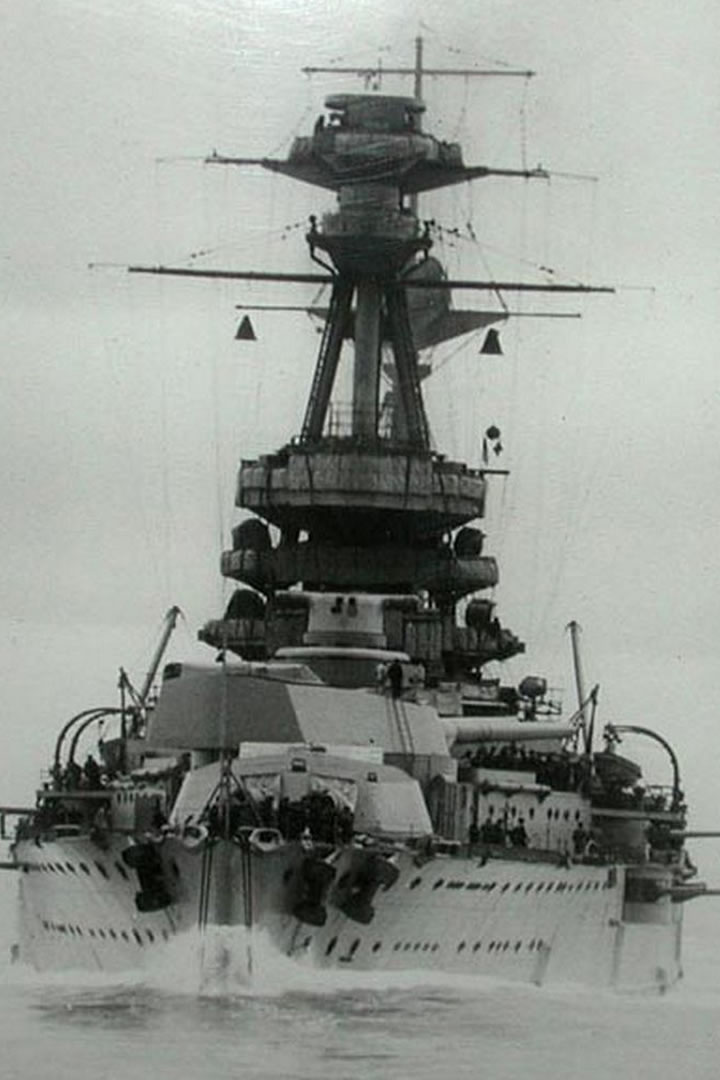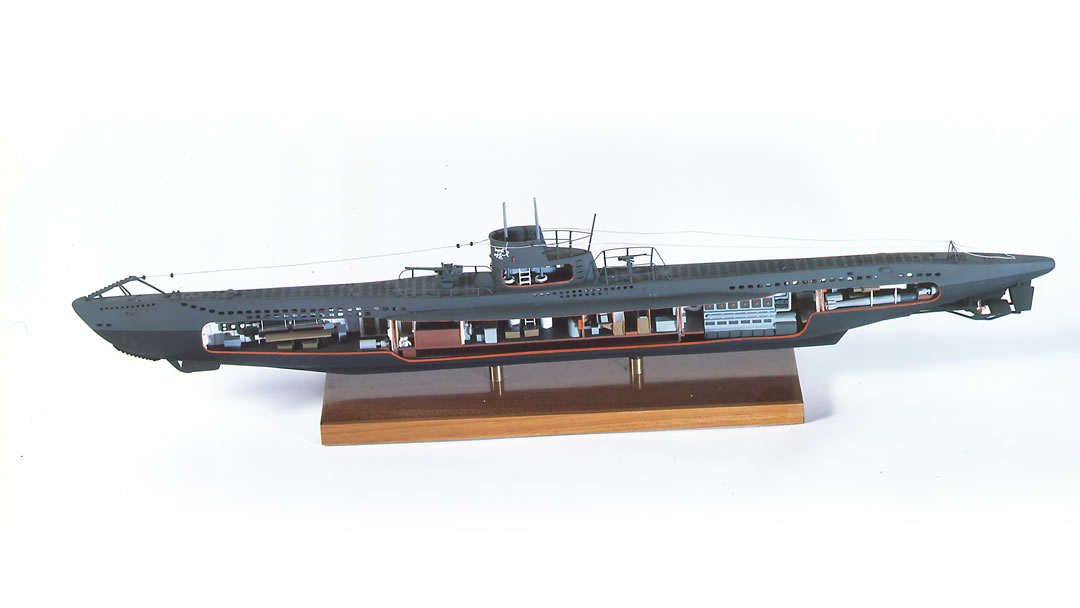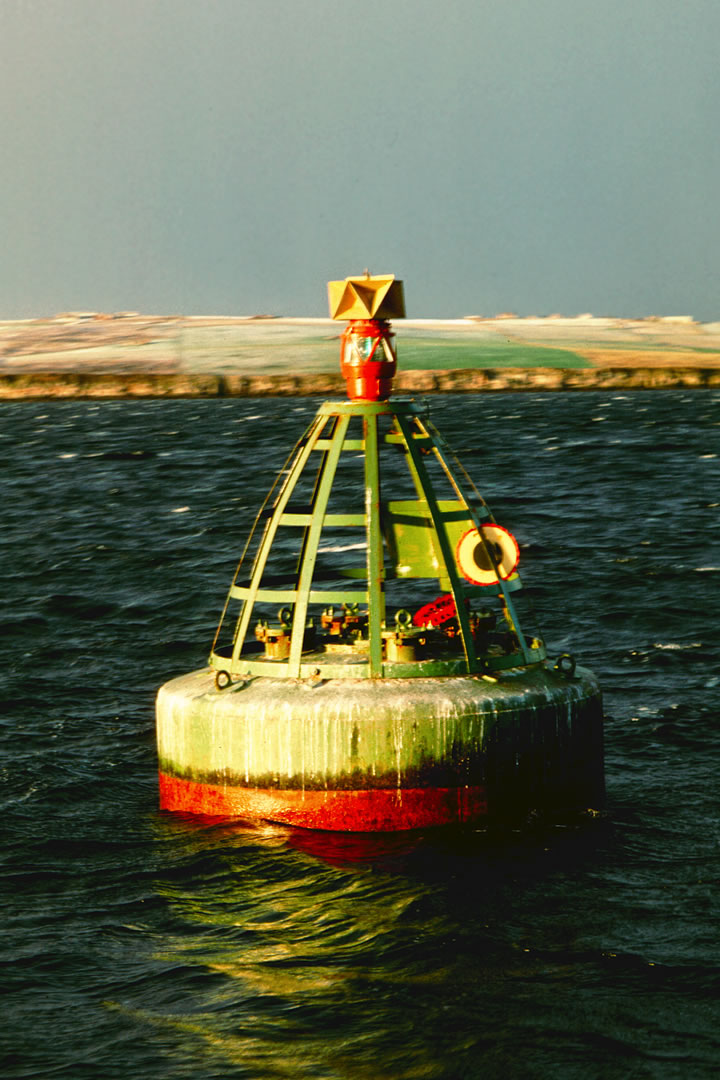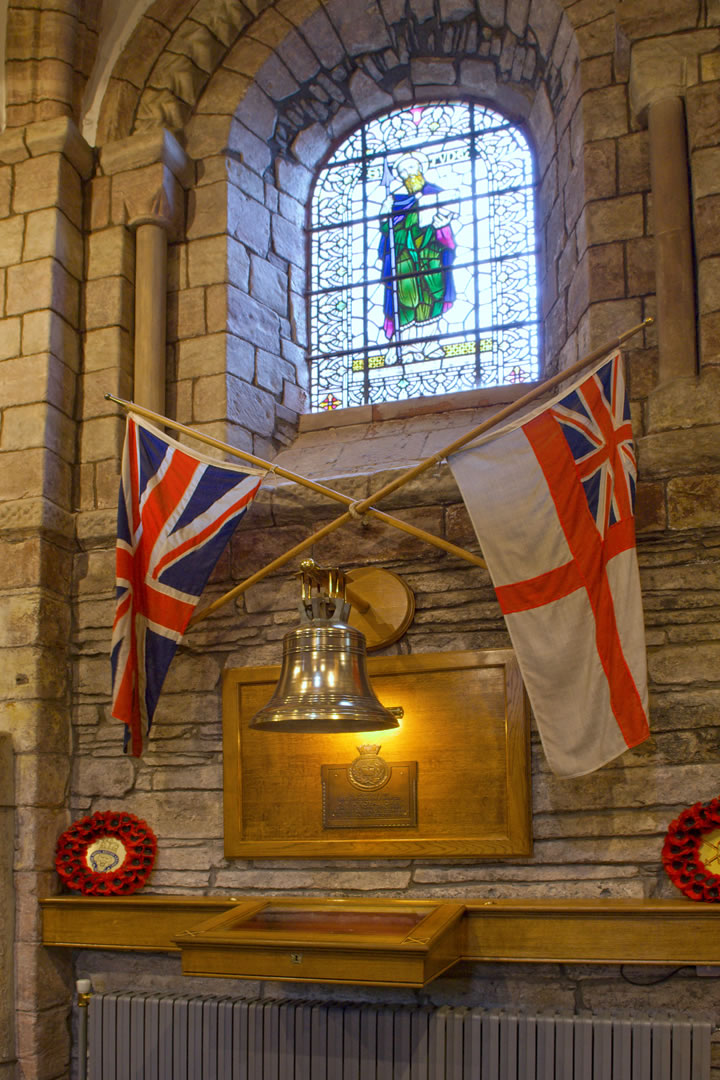The Royal Oak
HMS Royal Oak was a Revenge-class battleship of the British Royal Navy built in 1914 and a veteran of the First World War. The Royal Oak had extra armour and guns, which made her one ofthe best equipped of the Revenge class, but the additional weight caused her to sit lower in the water, lowering her top speed by several knots. Attempts to modernise Royal Oak throughout her 25-year career could not fix her fundamental lack of speed, and by the start of the Second World War, she was no longer suited to front-line duty. The Royal Oak returned to Scapa Flow in poor shape following a mission in the North Sea.

Scapa Flow was an ideal natural harbour for the British Fleet, but it’s defences had deteriorated through peacetime. Meanwhile, Kriegsmarine Commander of Submarines Karl Dönitz was planning to attack Scapa Flow by submarine within days of the outbreak of war. The plan would grant Germany greater freedom to attack the Atlantic convoys and would also be an act of vengeance, striking at the location where the German High Seas Fleet had scuttled itself in the First World War.

The attack was scheduled for the night of 13/14 October 1939, when the tides would be high and the night moonless. The U-boat commander, Günther Prien made the daring raid in U-47, rising tothe suface to find Scapa Flow illuminated by a bright display of the aurora borealis. The submarine was briefly caught in the headlights of a taxi onshore, but the driver raised no alarm.
U-47 fired a salvo of three torpedoes from its bow tubes. One struck the bow of Royal Oak, shaking the ship, but the crew returned to their hammocks, unaware that the ship was under attack. U-47 tried another shot via his stern tube, but this too missed. Then the submarine, doubled back, firing three torpedoes from it’s reloaded bow tubes. This time all three torpedoes struck the Royal oak in quick succession and detonated.
The explosions blew a 30-foot hole hole in the armoured deck, destroying the Stokers’, Boys’ and Marines’ messes and causing a loss of electrical power. A fireball passed rapidly through the ship’s internal spaces and the Royal Oak quickly listed some 15°, sufficient to push the open starboard-side portholes below the waterline. She soon rolled further onto her side to 45°, hanging there for several minutes before disappearing beneath the surface.

Many of Royal Oak’s crew who had managed to jump from the sinking ship were dressed in their nightclothes and were unprepared for the chilling water. A thick layer of fuel oil coated the surface, filling men’s lungs and hampering their efforts to swim. Of those who attempted the half-mile swim to the nearest shore, only a handful survived.
The vessel, Daisy 2, which had been tied to Royal oak, was freed and the skipper, John Gatt and his crew managed to pull 386 men from the water. Of Royal Oak’s complement of 1,234 men and boys, 835 were killed that night or died later of their wounds. Over one hundred of the dead were Boy Seamen, not yet 18 years old.
The British were initially confused as to the cause of the sinking, suspecting either an on-board explosion or aerial attack. By the time they understood the attack had been by a submarine, U-47 was heading back to Germany.
The loss of the old ship did not affect the numerical superiority enjoyed by the British navy, but the effect on wartime morale was considerable. The raid made a war hero out of the U-boat commander, Günther Prien. To the British, the raid demonstrated that the Germans were capable of bringing the naval war to their home waters, and the shock resulted in many changes to defence in Scapa Flow and other harbours.

The Royal Oak now lies almost upside-down in 100 feet (30 m) of water with her hull just 16 feet (5 m) beneath the surface. The Royal Oak is a designated war grave marked by a buoy. In an annual ceremony to mark the loss of the ship, Royal Navy divers place a White Ensign underwater at her stern. Unauthorised divers are prohibited from approaching the wreck at any time. A memorial at St Magnus Cathedral in nearby Kirkwall displays a plaque, dedicated to those who lost their lives.

These days there are environmental concerns about the Royal Oak. The ship sank with up to 3,000 tons of fuel oil aboard, and this oil has leaked from the corroding hull at an increased rate since the 1990s. The Ministry of Defence have begun to extract the accessible oil, but much is still to be removed.
